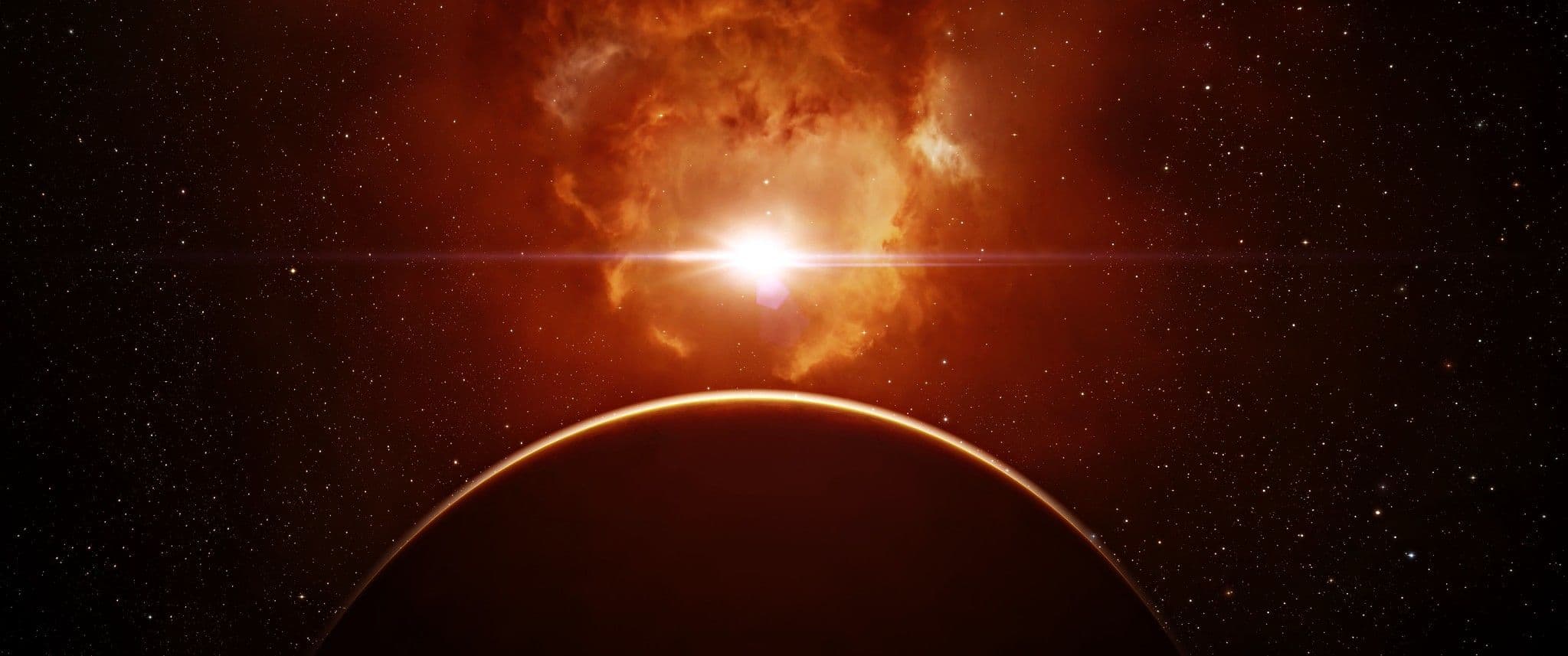We recently published a guide listing the 15 best starter activities in K-Space. While K-Space, or ‘known’ space, is generally regarded as New Eden’s safer neighbourhood - and therefore a likelier destination for newer players - some brave souls decide to set up shop in J-Space. J-Space, also referred to as Jove Space, W-Space, WH-Space, and Wormhole Space, is lawless. There’s no CONCORD policing misdeeds, no empire oversight, and no sovereign alliances. The threats are many... but so are the opportunities to make ISK.
We consulted our veteran community of EVE players to ask what new players should know about J-Space, and which activities they should partake in. While largely aimed at newcomers to EVE, the suggestions below are also relevant to longer-term players who’ve stuck with Known Space so far… but now wish to venture into the unknown.
1. Learning how to deal with wormholes
While this isn’t an ISK-making activity in and of itself, it’s still a requisite skill for anyone hoping to relocate to or holiday in J-Space. EveOnlineTutorials has put together this Wormhole Space 101 to introduce would-be wormholers to their new home:
“Wormhole systems are essentially uncharted systems unconnected to the open stargate network within EVE Online. They can only be accessed by scanning down the entrance of a wormhole. Upon entering a system, be sure to bookmark it. Otherwise, should you warp off, you’ll need to rescan the exit.
“At the time of writing, J-Space consists of roughly 2,600 systems separated into ‘classes’: C1, C2, C3, C4, C5, and C6. As the numbers rise, so rises the hostility of the system and the dangers you may find within. Furthermore, each system can produce a ‘system effect’, which will be one of the following: pulsar, black hole, cataclysmic variable, magnetar, red giant, or wolf rayet.”
Here’s a quick explainer, with thanks to EVE Uni whose wiki was heavily relied upon for these breakdowns:
Pulsar: Powerful when used well, pulsar systems provide significant improvements to shield HP, capacitor recharge time, ship signature radius, energy neutralisers, and NOS ships. By contrast, armour resistances are debuffed, so armour-based ships should be avoided or used carefully.
Black hole: Great for high-speed, long-range missile ships, black hole systems offer massive bonuses to ship velocity, missile velocity, missile explosion velocity, and targeting range. What's more, they penalise statis webifiers, making it difficult to hold a speeding enemy. This is somewhat balanced by an increase in inertia; slowing acceleration, course correction, and warp-alignment time.
Cataclysmic variable: These systems offer huge bonuses to remote repair modules and the capacitor volume of the ships using them. However, they also greatly reduce the strength of local repair modules and remote cap transmitters. This makes them poor systems for capital warfare, but great systems for heavy logistical support.
Magnetar: These highly desirable, wildcard systems offer huge damage bonuses. However, you’ll have to hit your target first, which won’t be easy considering the penalties on explosion radius, drone tracking, targeting range, tracking speed, and target painter strength.
Red giant: The best way to capitalise on a red giant system is with bombs - specifically smart bombs, which receive significant boosts to damage and range.
Wolf rayet: Frigates, tactical destroyers, and cruisers fitted with rapid light missile launchers thrive in wolf rayet systems. That’s thanks to the whopping small-weapon damage boosts, which reach up 200% for Class 6 systems. Moreover, wolf rayets penalise shield resistances while enhancing armour and signature radius, making them effective opposites of pulsar systems.
System effects can make or break a J-Space encounter. So whenever you enter a wormhole, you’ll want to look above your capacitor gauge to check the effects on your ship. Anyone planning to spend a good amount of time in J-Space will want to start by familiarising themselves with these effects. It’s a safe bet to assume that they’ll be second nature to local, hostile players; learning about them will minimise would-be foes' advantage over you.
The wormholes themselves can have their own special properties, too. Here’s EveOnlineTutorials again:
“There are also so-called ‘special wormholes’, also known as Drifter wormholes or shattered wormholes. All Drifter wormhole systems have C2-strength effects, so they’re not too tough to deal with. Finally, each system also has the possibility of ‘static entrances’ or ‘statics’ - wormholes which act as gateways to and from K-Space (Nullsec, Lowsec, Highsec) systems.”
Ashterothi advises players to first “identify what kinds of wormholes they’re looking for and then get out there to look for them.” But he doesn’t recommend doing it without first taking advantage of the third-party tools that make wormholers lives that bit easier and safer: “Use ellatha to determine the type of wormhole and its statics, then use zkillboard to monitor recent activity.” By that, he means details such as how many people have been killed there, and by whom.
For other useful wormhole navigation tools, check out this EVE Online third-party tools guide.
2. Exploration and Cosmic Signatures
To boldly go into the uncharted is half the fun of wormhole space. And exploring can be just as profitable as enjoyable. That’s because in EVE, ‘exploration’ doesn’t just mean flying around admiring the view. It’s the use of scanning probes to locate cosmic signatures, which can turn out to be hackable containers, resources, NPC collectives, and new wormholes.
Exploration is a great pursuit for EVE beginners. It can be extremely lucrative, especially for pilots willing to venture into more dangerous systems. Furthermore, it has a low skill barrier and doesn’t require a big investment, as AlexGoesTheWorld (AlexGoesTheWorld) notes: “a Heron with data and relic analysers was enough for me”.
FUN INC is convinced that “exploration and cosmic signatures are the route to J-Space content”. He summarises the different sites that explorers might come across:
“Combat sites - kill rats for dank rewards Relic and data sites - hack to access dank rewards Gas sites - harvest gas clouds for booster and T3 production Ore sites - mine ice asteroids for fuel production Wormholes - routes to and from your system”
As Fun Inc notes, “the most important thing is finding something that’s fun for you to do.” We’ve covered wormholes already, but with Fun Inc’s advice in mind, let’s explore some of those options in more detail:
3. Huffing gas and mining ore
We’ve grouped gas harvesting and ore mining together because they follow a similar pattern: scan > harvest > refine > sell. We’re going to concentrate on gas harvesting (huffing) here because - at the time of writing - it’s by far the more profitable of the two enterprises for new players.
Gas harvesting is not exclusive to J-Space; you can learn more about it in our K-Space companion guide or better yet in our comprehensive gas harvesting guide. The latter article also explains techniques for dealing with the NPCs that spawn after a fixed time, including but not limited to ninja huffing.
Thanks to its proliferation of wormhole gas resources, J-Space is a hub for T3 and booster production. As EveOnlineTutorials notes, it’s a profitable business, but you’ll likely want to find a group to help you.
As with exploration, getting started as a huffer won’t break the bank. AlexGoesTheWorld recommends a minimum of a Venture, two gas harvesters, and basic knowledge of the sites to pick.
4. Tackling data and relic sites
Data and relic sites are scannable sites that require hacking. On that note, here’s a quick tip from EveOnlineTutorials: “Each node you click on will contain a number. If the number goes up upon being clicked, you’re going in the wrong direction.”
It’s important to note that data and relic sites are classed as PvE combat sites. Failing to hack a data site twice may not only result in the cache being lost but the summoning of hostile frigates. And those hostiles can pack a punch. Here’s AlexGoesTheWorld: “To solo them, you’re going to need a battlecruiser like a Drake or Gila. You have to beware because NPCs hit like trucks.”
Look no further than these battlecruiser fits if you’re wondering what to fly.
5. Dealing with sleeper sites
While we won’t tackle every type of site here, we’ll give a special mention to Sleeper sites - a combat site, which in EveOnlineTutorials’ words “are not to be taken lightly at all. Sleepers are highly dangerous NPCs that will kill you quickly”. We’ve included them in this beginner’s guide not because they’re recommended for new players, but because we recommend that new players steer well clear.
For those with the mettle to ignore our words of warning, great rewards await should you succeed. Although even if you forgo our advice, at least heed EveOnlineTutorials’: “if it’s your first time, you’re going to want to ask some corp or alliance mates for ship fits before attempting these.”
6. Planetary industry
The final new-player-friendly J-Space activity recommended by our EVE Online community isn’t a cosmic signature. PI (Planetary Industry, previously Planetary Interaction) is Ashterothi’s bread and butter. If you’re heading to J-Space for the long-haul, you’ll likely want a planet to call home. So here’s Ashterothi’s guide to planetary home-hunting:
“One of the nice things about J-Space is that even the lowest-class wormholes are still Nullsec-quality planets for PI. Combine that with the fact that fuel will always be a concern for you, and planetary availability is one of the principal considerations in finding a good home.”
After using Ellatha and zKill, Ashterothi says a home-hunter’s next best tool is Dotlan, an EVE navigation tool which reveals planetary availability.
“Then you’ll want to evaluate how hard the holes are to open, what statics the system has, and what PI is available. It’s also worth considering the logistics of moving fuel into the hole itself. I recommend monitoring the hole for several days to determine if there are any occupants or other things to concern yourself with. Once a candidate is accepted, it’s time to move in and arm up.”
As for those static wormholes, here’s EveOnlineTutorials adding some context: “Wormhole Space offers highly productive and lucrative planets, but refuelling these operations can be an issue. Choose your Wormhole Space PI systems carefully, preferably those with static Highsec entrances.”
A final wormholing warning
J-Space is unpredictable and dangerous. We’ve spoken about the lethal PvE dangers, but your greatest threats are other players. Here’s AlexGoesTheWorld:
“Those who can ruin your play often will. In J-Space, you don’t see people in local chat, so keep a vigilant eye on your D-Scan or have someone else around to keep an eye on you. That’s standard operating procedure for whatever you’re doing in J-Space. When in doubt, go to docking or to a safe.”
Are there any other beginner-friendly J-Space activities that you’d recommend? Let us know in the comments below. Some text has been amended for brevity. You can find the original wording at the bounty post.
Created at . Page last updated at .






